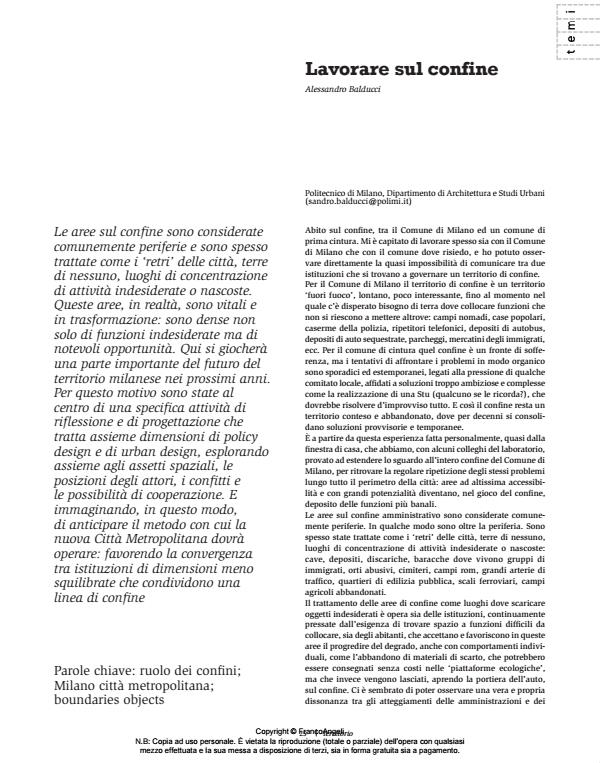Working on the border
Journal title TERRITORIO
Author/s Alessandro Balducci
Publishing Year 2014 Issue 2013/67
Language Italian Pages 2 P. 25-26 File size 651 KB
DOI 10.3280/TR2013-067003
DOI is like a bar code for intellectual property: to have more infomation
click here
Below, you can see the article first page
If you want to buy this article in PDF format, you can do it, following the instructions to buy download credits

FrancoAngeli is member of Publishers International Linking Association, Inc (PILA), a not-for-profit association which run the CrossRef service enabling links to and from online scholarly content.
Areas on the border are commonly considered peripheral areas and are often treated as the ‘backends’ of cities, no man’s lands, places where undesirable or hidden activities are concentrated. In reality these areas are vital and they are changing. They are filled not only with undesirable activities, but also with considerable opportunities. An important part of the future of the Milan area will be played out here in the next few years. That is why they were the centre point of specific study and design which brought together the dimensions of both policy and urban design and explored spatial aspects together with the stances of the actors, the conflicts and the possibilities for co-operation. And by imagining, in this manner, how to anticipate the method by which the new metropolitan city will have to operate, the study favoured convergence between institutions of a less disproportionate size which share borders.
Keywords: The role of borders; Milan metropolitan city; boundaries objects
Alessandro Balducci, Lavorare sul confine in "TERRITORIO" 67/2013, pp 25-26, DOI: 10.3280/TR2013-067003